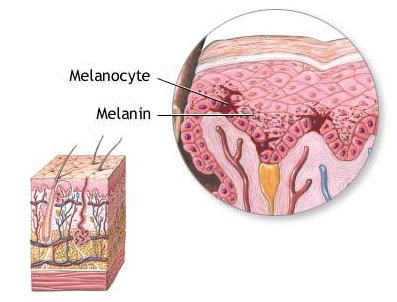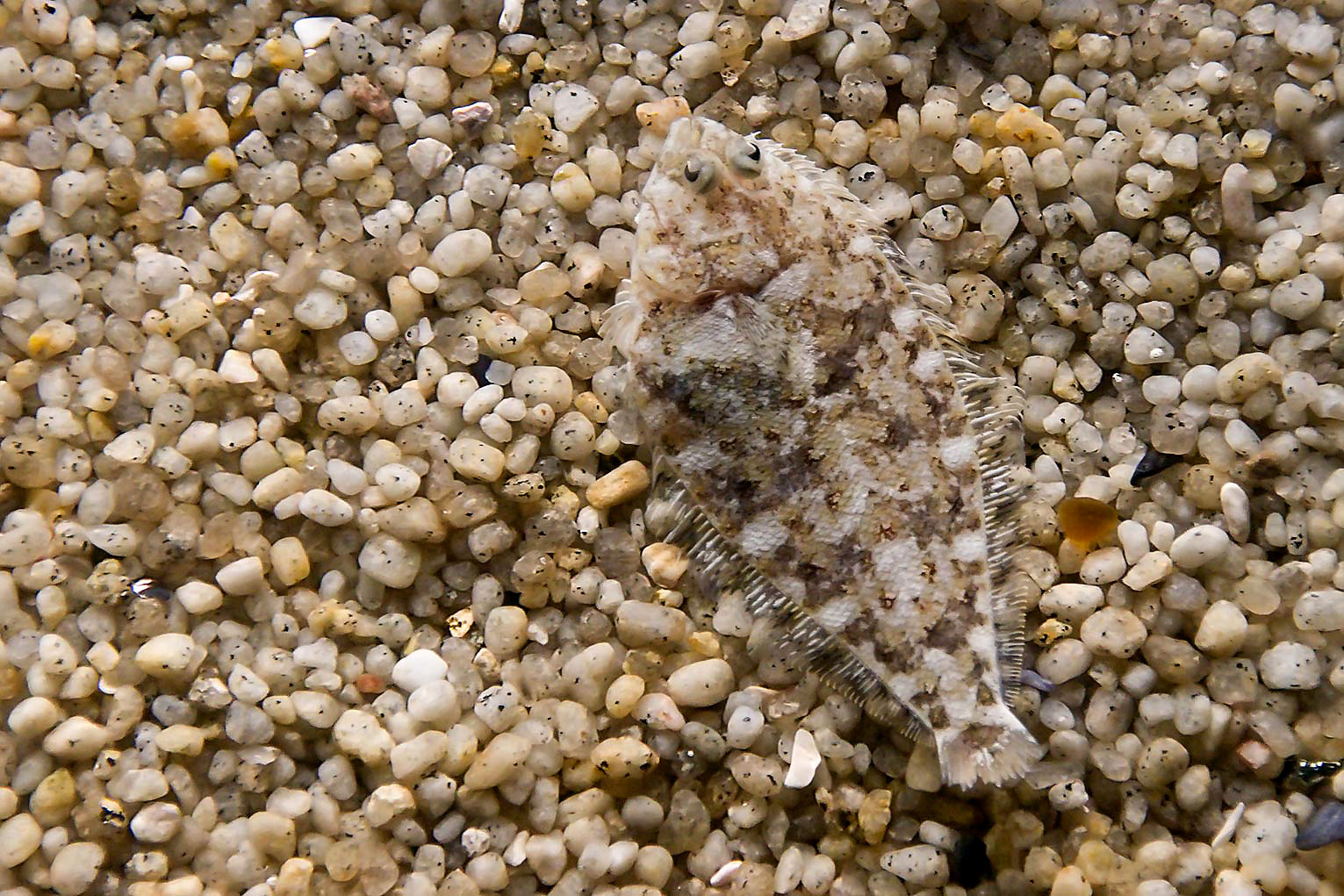 |
| Source: http://training.seer.cancer.gov/melanoma/anatomy/layers.html |
Melanocytes are specialised cells that produce the pigment, melanin. They can be found in the deepest layer of the epidermis in the skin. They are also located in the middle layer of the eye (the uvea), the inner ear, meninges, bones, and heart. Melanin is a pigment that is responsible primarily for the colour of skin.
In animals melanin pigments are derived from the amino acid tyrosine. The most common form of biological melanin is a brown-black colour.
However, not all animal colours come from pigments. Structural colours are caused by interference effects rather than by pigments. Colour effects are produced when a surface has microstructures that interfere with the wavelength of light to produce colours. This is analogous to the rainbow colour seen in an oil slick on a wet road and in soap bubbles. This iridescent effect is seen in animals in peacock feathers, butterfly wings and beetle shells.
 |
Soap bubbles |
 |
| Iridescent peacock feather |
One of the purposes of all this colour is camouflage. Animals use camouflage to blend into their environment and avoid detection. Prey species do this to avoid detection or to confuse their predators. Predator species do it to sneak up on their prey and avoid detection until it is too late.
There are various tactics to achieve camouflage.
Some colour themselves like their background. The brown colours of deer and kangaroo are to match trees or dirt.
 |
| Euro | |
 |
| Ibexes in the Israeli desert |
Some use countershading, where the shading is darker on the back and lighter on the belly. For example, the combination of blue skin and white underbelly of sharks. This makes them difficult to detect from both above and below. From below their lighter belly matches the lighter sea surface. And from above their darker dorsum matches the colour of the deeper water and sea floor.
 |
| White shark |
Tigers and zebras have stripes to help them blend into their environment. At first glance you might think that the colours are garish and do not match the environment. But the animal's they are trying to hide from-the tiger's prey and the zebra's predator-are chiefly colour blind. To them, the tiger and zebras look the same as the environment.
 |
| Tigress Indrani in Kanha National Tiger reserve of central India. |
More complex patterns can be seen in animals such as flounder, moths, and frogs, among many others. Flounder have a granular pattern which mimics the gravelly surface the rest upon.
 |
| Flounder |
Colouration can be used to break up the outline of an animal's body. For example, in common domestic tabby cats.
 |
| Tabby cat |
Some animals, such as cuttlefish, can change their colour and pattern to match their surroundings. They use special pigment cells called chromatophores.
 |
Cuttlefish has changed the pattern on its dorsum
to match the gravel it lies upon |
Some change their colour with the seasons. The Arctic fox's and the stoat's coat colour changes from earth brown in summer to snowy white in winter to match its changing surroundings.
 |
| Stoat colour in summer and winter |
Some animal's bodies mimcic the shapes, colours and patterns of the foliage and surfaces they frequent.
 |
| Leaf insect (Phyllium giganteum) |
Some use patterns or stripes that bled together when animals are in groups. A herd of zebras looks like one large mass, making it difficult for a lion to pick out any individual zebra. This same concept is used by many striped fish species as well.
 |
| Zebras on the Serengeti |













